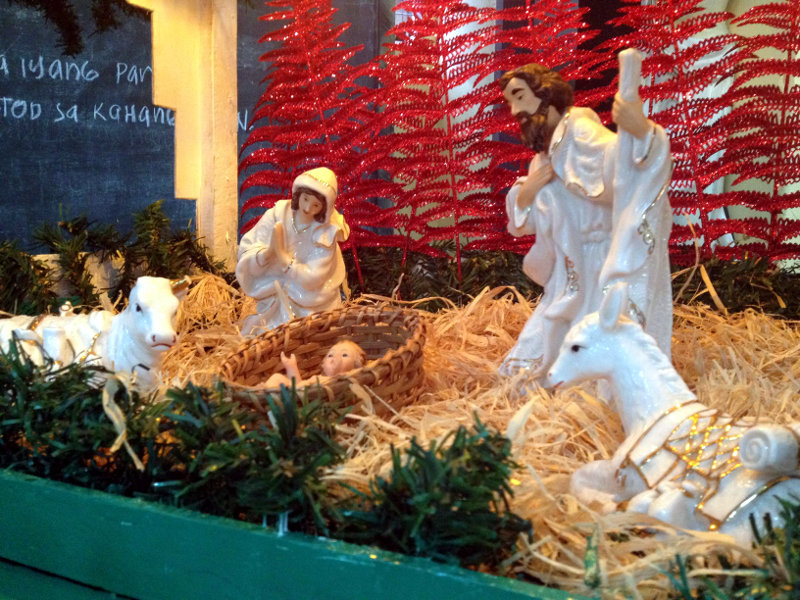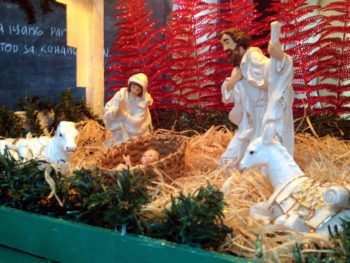
The Story behind “Silent Night”
 If the church organ had not broken down and if the organist had not been able to strum a few chords on a guitar in an emergency, the loveliest Christmas carol of them all might never have been written.
If the church organ had not broken down and if the organist had not been able to strum a few chords on a guitar in an emergency, the loveliest Christmas carol of them all might never have been written.
Twenty-six-year-old Father Joseph Mohr, assistant priest at the newly erected Church of St. Nicholas in Oberndorf, in the Austrian Alps, was far from happy when his organist friend, Franz Gruber, told him that the pipe organ could not be used for the special Christmas Eve Mass scheduled for December 24, 1818.
Although he trained the choir and played the organ at Arnsdorf as well as at Oberndorf, Thirty-one-year-old Gruber had neither the talent nor the time to repair broken connections, restore shattered pipes, or replace worn-out bellows. While Father Mohr was not desperate, he was a bit peeved at the prospect of Midnight Mass without the traditional organ music.
To relieve his tension, he bundled himself up in his warmest winter clothes and went visiting among his humble people. Shortly after arriving at the home of one of his faithful families, a new baby was born to the poor laborer and his wife. The pastor compared that event with the birth of the Christ Child centuries earlier, and, upon arriving home a few hours later, conquered his fatigue and weariness long enough to pen four simple stanzas describing the wonder and the majesty of the first Christmas. His initial stanza contained these beautiful lines:
Silent night, Holy night!
All is calm, all is bright
Round yon Virgin Mother and Child,
Holy Infant, so tender and mild;
Sleep in heavenly peace!
Sleep in heavenly peace!
When Gruber burst into the room a few moments later with the news that the organ was hopelessly beyond repair, Father Mohr handed him the slip of paper on which he had written the new stanzas. While the choir-master read them, the priest picked up a guitar in an adjoining room, and handed it to him, saying, “If we can’t have the organ, at least we can have a new song. Try your hand at this.”
The more Gruber protested, the stronger Mohr insisted. To quiet his friend, Gruber strummed a few simple chords on the guitar, and soon was humming an original melody that seemed to express the sentiments of the poem perfectly. At midnight the new carol was sung for the first time.
It might have remained there at Oberndorf had not Karl Mauracher come from the valley of Zillertal to repair the organ early 1819. Mohr asked Gruber to play the new carol for the famous organ builder and repairman, when the job was finally completed, and Mauracher fell in love with it right away. About ten years later he felt that the four gifted Strasser children, Caroline, Joseph, Andreas, and Amalie, were just the ones to give the new song to the world. They renamed the carol “The Song from Heaven” and sang it wherever they went.
On the Christmas Eve 1832, they were invited to introduce it in the Royal Saxon Court Chapel in Pleissenburg Castle for the King and Queen of Saxony. The Director General of Music, Mr. Pohlenz, had heard the children singing at one of the great fairs in Leipzig where their parents went every year to sell their famous gloves. The unusual music had created an immediate sensation, and word spread rapidly that “the four Strasser children sing like nightingales.” It was at his request that the four were invited to sing for the Royal family at this special Christmas Eve celebration. Shortly thereafter, “Silent Night” took its rightful place among the most beautiful Christmas carols in the Christian world, and the passing of time has only added to its luster.
Sources:
- St. Timothy’s Gazette, November 2005
- Celebration: Stories of the Songs of Christmas by Linda L. Hargrove-Teets
- The San Saba News and Star, December 16, 1971


No Comments